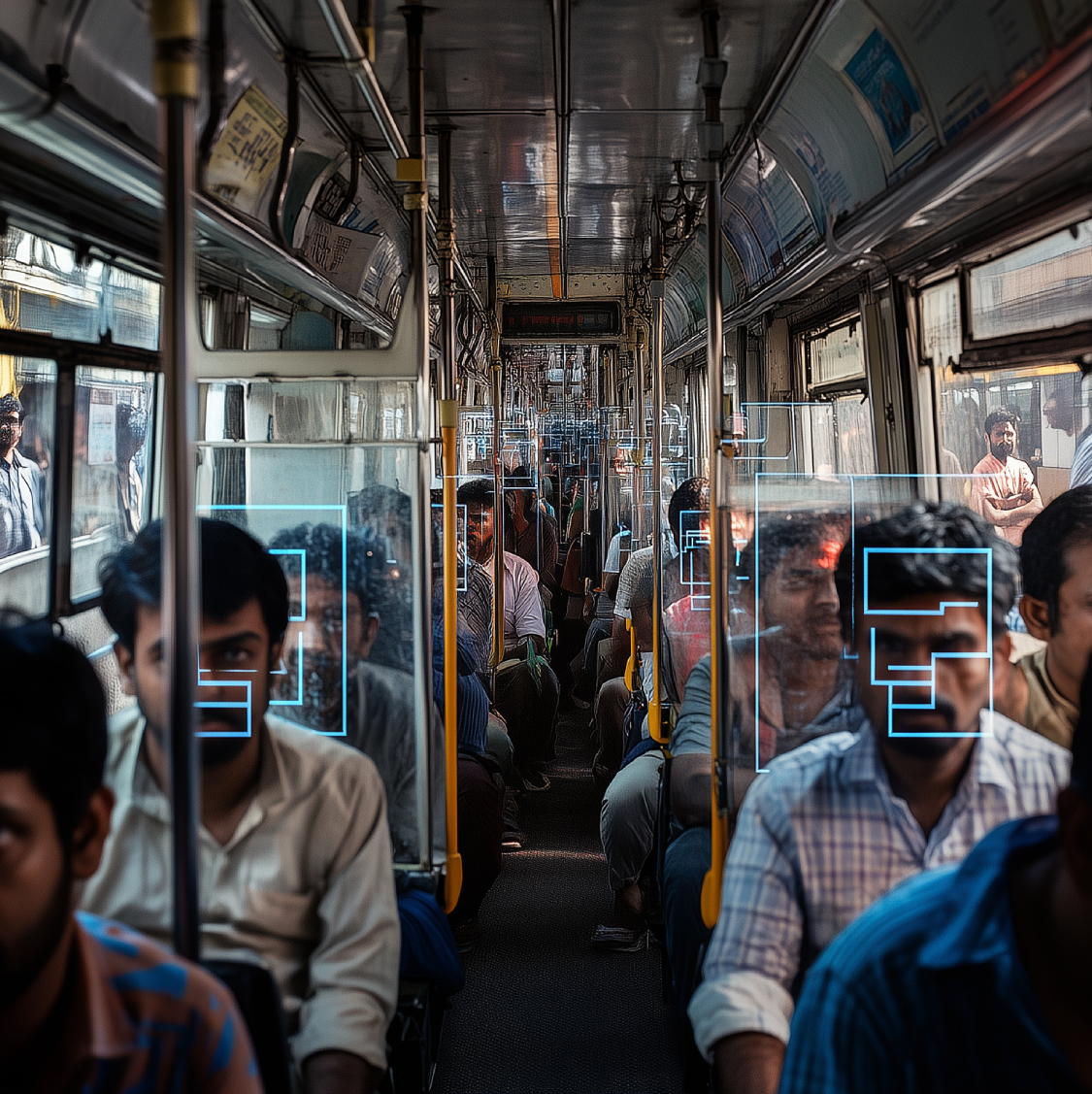Looking around in
2045: Mumbai
CONCEPT NOTE
The Mumbai Suburban Railway is a network of inner suburban railway lines and commuter rail services that connect the Mumbai Metropolitan Region to outlying suburbs.
The system spans 390 km and operates 2,342 trains daily, carrying thousands of commuters across one of the most densely populated places on the planet. As of December 2022, approximately 66 million commuters travelled on Mumbai's local trains.
The Mumbai Local trains ferry over 7.5 million commuters across its networks every DAY.
This is more than double the population of Los Angeles.
The first few AI systems developed specifically for mass transit went live for testing simultaneously with the New York City Transit Authority as well as the London Underground. Other metropolises quickly began to take notice.
With the push away from dirty energy also came the push towards efficient and safe mass transit, with Mumbai city leading the Indian AI developers in a race to work out a contextual solution.

Local Transit Authority : Mumbai 2045

Facial Recognition, Numerical sorting and Counter-terrorism AI systems : Mumbai 2045
With a slew of developers feeding off lucrative AI contracts, a variety of ancillary industries took off. A local Drone builder won a contract to feed the AI system aerial data across the suburban stations and their surrounding areas.
This valuable data allowed railway stations to be more responsive to surges in crowds, seasonal flooding and other factors, as well as festivals and cricket matches. The deployment of personnel, resources and safety officers increasingly were informed by data coming from the new inter-connected Artificial Intelligence systems.

First Drone Surveillance deployment at Mumbai Central : Mumbai 2045

Drone Surveillance fleet at Grant Road Station and perimeter : Mumbai 2045

AI databases for platform vendors and unique identification systems : Mumbai 2045
The overcrowding and associated daredevilry of Mumbai’s train commuters may be fascinating, but there is a huge price to be paid. Every year, almost 2000 people are killed along the rail network. In the decade of 2002-12, 36,512 people lost their lives, while 36,688 were injured.
The next round of prosthetic AI driven safety systems introduced a whole new element into the suburban train travel paradigm, making sure casualties were minimised an documented in detail.
Source : https://shorturl.at/EohM9

Robotic safety prostheses : Mumbai 2045

Robotic safety prostheses : Mumbai 2045
The new AI driven infrastructure was soon deployed to regulate train schedules, define routes and predict maintenance schedules, creating a robust partnership between the intelligence and the city’s arterial network.
With the push for solar transition also came the AI-driven energy optimisation and a move towards a more efficient cleaner transportation paradigm. Commuters also reported a drop in congestion at peak hours due to a responsive realtime train scheduling, through powerful passenger pattern analysis.
The hidden consequences have been a widespread and slowly increasing loss of jobs, with numbers steadily dropping. The AI systems and their “always-on” status has already created dipping attention amongst the few human operators, with the basic assumption that safety is now guaranteed.
The system has not yet encountered ethical dilemmas with the automatic braking system, and it remains to be seen how public response reacts to these grey areas.

AI based crowd mapping system : Mumbai 2045
Ayaz Basrai is co-founder of The Busride Design Studio, a leading architecture and interior design firm in India. Busrai graduated in industrial design, specialising in product design, from the National Institute of Design, Ahmedabad, in 2003. More recently, Busrai heads The Busride Lab in Goa, working with speculative fiction, heritage conservation, and their ongoing India Futures Project, trying to visualise and birth meaningful Indian futures.

Copyright © Forecasting Human Welfare.
Powered by Orotron